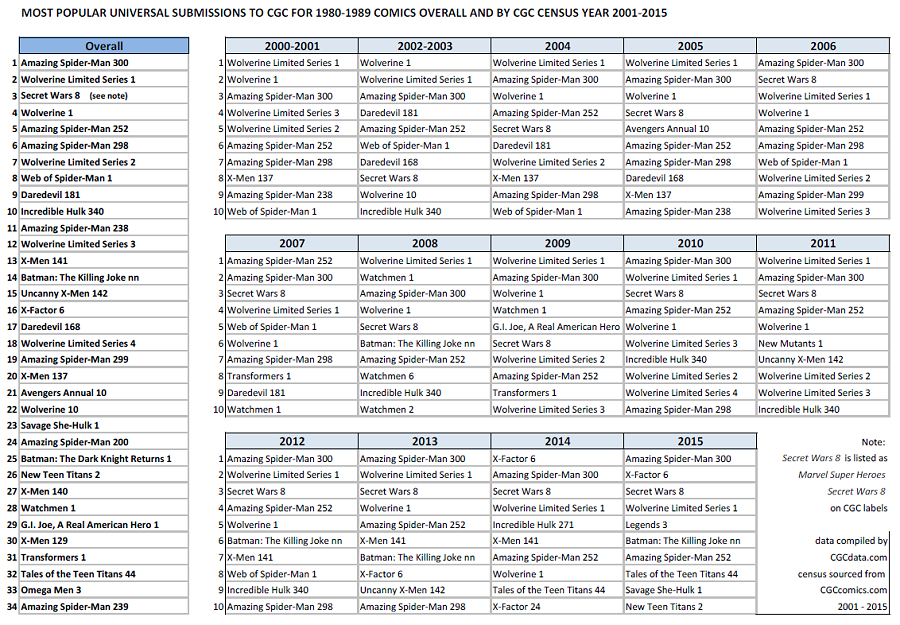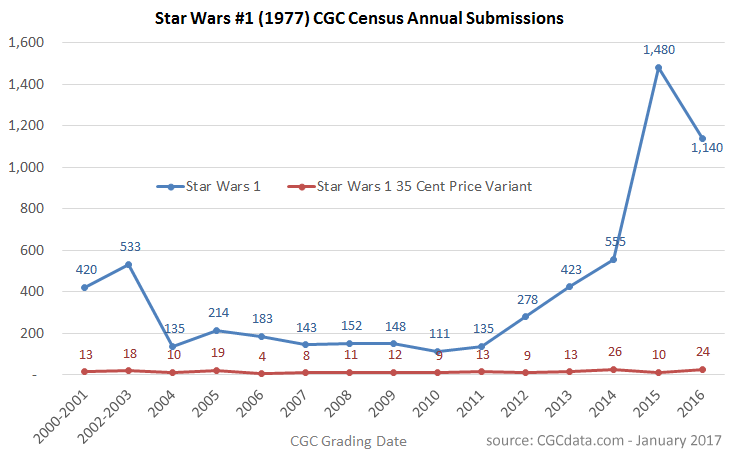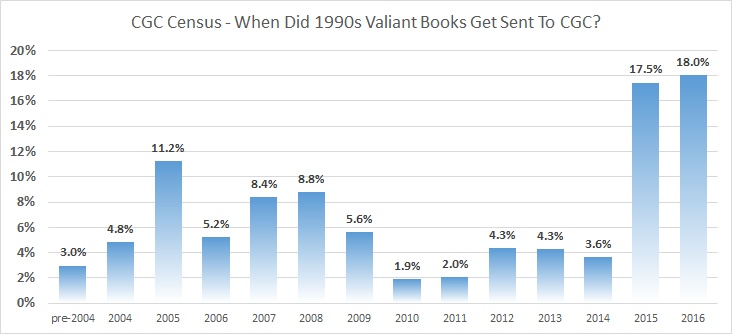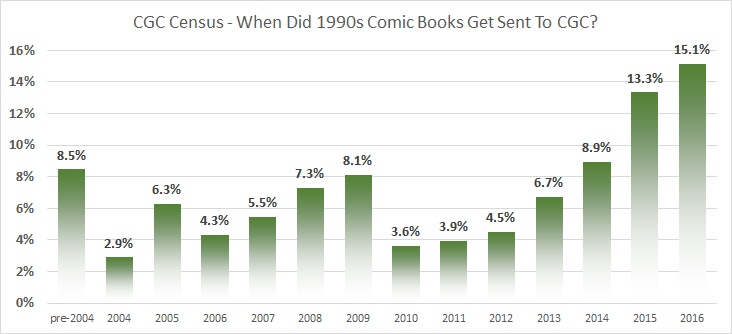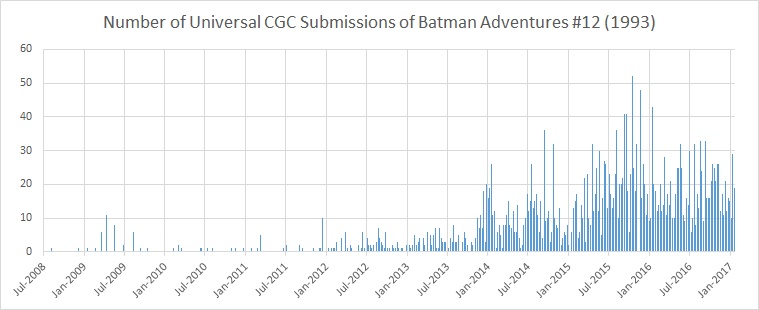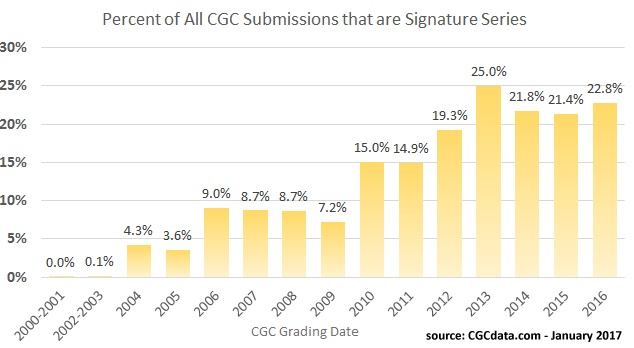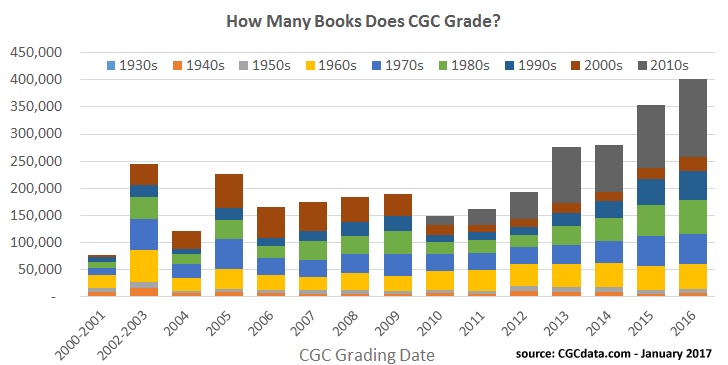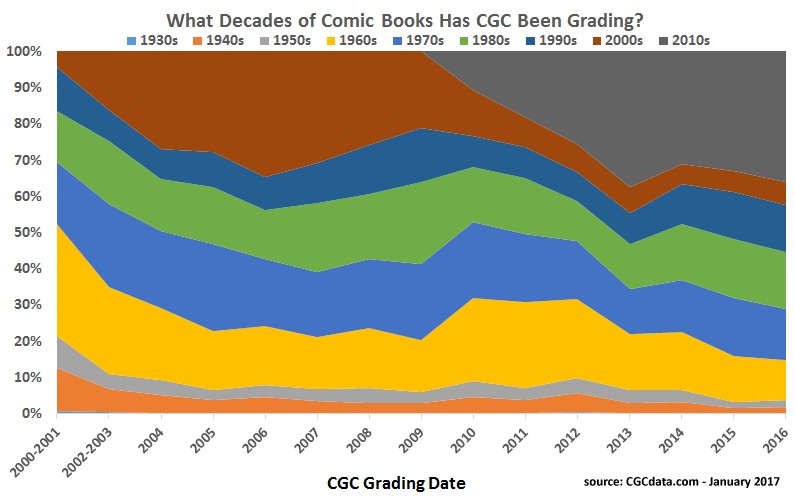After more than 3,200,000 comics graded 2000 to 2016, this is the Top 25 list of the oldest CGC 10 comic books.
| Ranking | Comic | Date |
| 1 | Kolynos Presents the White Guard 1 | 1949 |
| 2 | Thor 156 | 9/68 |
| 3 | Snatch Comics 1 Third Printing | 1969(?) |
| 4 | Aurora Comic Scenes 182-140 | 1974 |
| 5 | Aurora Comic Scenes 184-140 | 1974 |
| 6 | Aurora Comic Scenes 185-140 | 1974 |
| 7 | Aurora Comic Scenes 188-140 | 1974 |
| 8 | Aurora Comic Scenes 192-140 | 1974 |
| 9 | Aurora Comic Scenes 193-140 | 1974 |
| 10 | Captain Canuck 1 | 7/75 |
| 11 | 1984 3 | 9/78 |
| 12 | Cerebus the Aardvark 6 | 10/78 |
| 13 | Cerebus the Aardvark 7 | 12/78-1/79 |
| 14 | Daredevil 157 | 3/79 |
| 15 | Battlestar Galactica 5 | 7/79 |
| 16 | Cerebus the Aardvark 15 | 4/80 |
| 17 | Cerebus the Aardvark 21 | 10/80 |
| 18 | Eerie 115 | 10/80 |
| 19 | Fantastic Four 226 | 1/81 |
| 20 | Amazing Spider-Man 216 | 5/81 |
| 21 | Ka-Zar the Savage 7 | 10/81 |
| 22 | Uncanny X-Men 156 | 4/82 |
| 23 | Ghosts 112 | 5/82 |
| 24 | Marvel Team-Up 117 | 5/82 |
| 25 | Star Wars 59 | 5/82 |
A list of all CGC 10 comics 1949 to 1999 is available:
CGC10list.xls (Excel format)
There are 256 different comics in the list, some duplicate CGC 10 so the total number of CGC 10 slabs 1949 to 1999 is 547.
Earlier labels noted the grade as CGC 10.0, but the current standard label states CGC 10.

